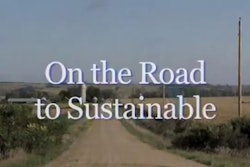These are the first revisions in 12 years and only the third revisions since the Guides were created 18 years ago. And yet, though the new proposed adjustments to the Guides were designed to keep up with the times, they altogether avoid guidance on the single most commonly uttered environmental concept these days: “sustainability.”
FTC again reminds marketers that it is important to make claims clear so that consumers know whether you are asserting a benefit about the package or the product in it, or about only part of the package or product.
The FTC summarizes its inspiration for the Green Guides in a succinct, clear, and unintentionally humorous sentence: “Environmental marketing claims are useful sources of information for consumers, but only when they are true.” (Cue the teenagers: “Duh!”)
As the name indicates, these are guidelines, not binding regulations. FTC takes input from industry and surveys consumer perceptions when they make or revise the Guides, and they are designed to assist packaging makers and users in making claims about product attributes that FTC won’t consider false or misleading. Though not strict requirements, the Guides do give packagers excellent hints about what FTC will consider to be false or misleading. It’s FTC’s job to police the fairness of trade, so that’s why they are the agency involved in making guidance about environmental claims, not the Environmental Protection Agency, which implements a series of laws intended to protect the environment.
The making of environmental claims such as “recyclable,” “degradable,” and “environmentally friendly” has been especially popular for decades, and the kinds of problems that regulators perceive with them tend as much or more toward confusion as fraud.
With a little guidance and some illustrations, FTC hopes the Green Guides will lead packagers away from false claims and also away from claims that will confuse consumers because they are too vague or too prone to be misunderstood. It’s a common theme in the Green Guides that claims should clearly explain what they mean.
Times change, consumer interests change, and new package or product attributes emerge, and FTC perceives the need to tweak its guidance for industry. So the new proposed revisions to the Guides retain FTC’s guidance about claims of general environmental benefit; environmental seals of approval; compostable; degradable; recyclable; ozone-friendly; and free-of or non toxic, clarifying or adjusting them here and there.
FTC addresses some new claims with this proposed revision:
• “Made with renewable materials.” Here the agency advises that it should be clear what material is renewable, how it’s sourced, and why it’s renewable.
• “Made with renewable energy.” Here the FTC recommends making clarifying qualifications “if the power used to manufacture any part of the product was derived from fossil fuels,” and clarifying the source of the renewable energy (such as wind or solar).
• “Carbon offsets.” FTC reminds marketers they need to have “competent and reliable scientific evidence” and should quantify the benefit accurately, nor should they tout a carbon offset if the reason for the offset “is already required by law.”
Sustainability as a term is commonly used to convey a variety of concepts, including non-environmental considerations like concern for community relations and economic development. As hot as it is in current parlance and practice, “sustainability” or “sustainable” still lack the critical mass of consumer understanding to justify FTC action. In fact, FTC says consumers sometimes think the term “conveys non-environmental characteristics (e.g., durable or long-lasting).”
FTC asked consumers what “sustainable” means, and 13 percent said it means nothing, 8 percent didn’t know what it means, 19 percent said it means “strong or durable,” and 16 percent said it means “long lasting.” Only 7 percent said it suggested that a product is good for, helps, or benefits the environment.
For the Green Guides to have greater benefit for packagers, they will have to tackle the claims the market commonly employs. But even though the FTC has newly polished and tightened proposed guidelines to offer, it appears that the term “sustainable” will have to mature in meaning before FTC can offer guidance on using it fairly and consistently.
For a copy of the Green Guides and FTC’s background discussion on its new proposed revisions, contact Eric at [email protected].

























